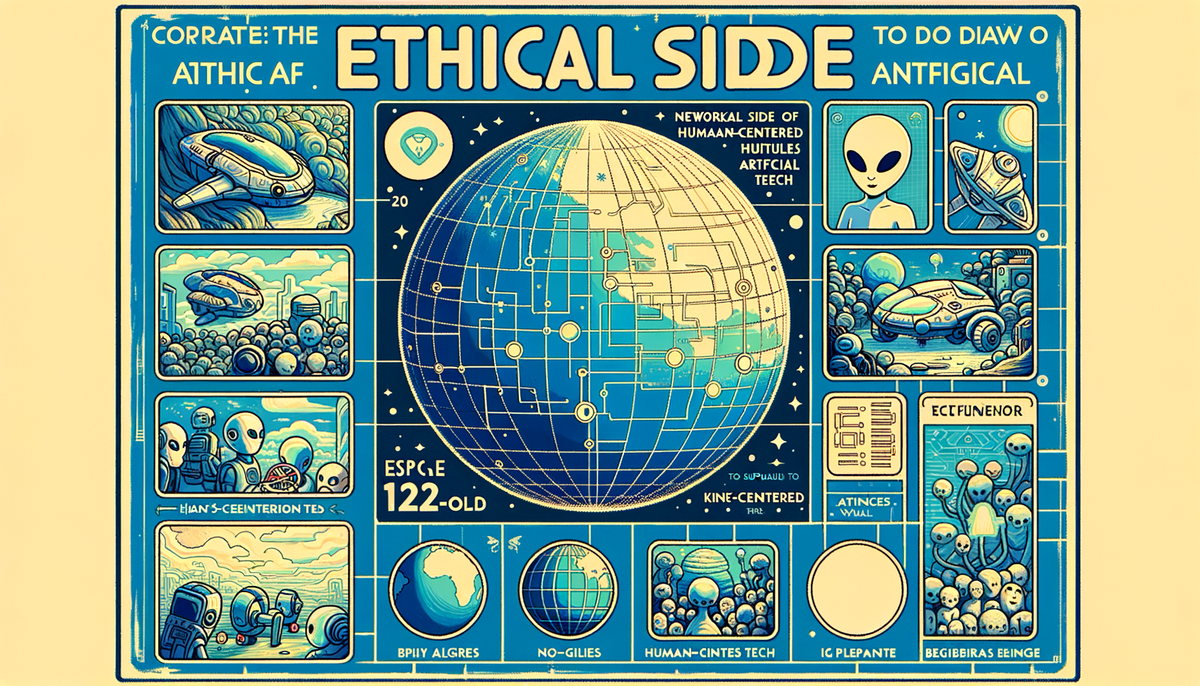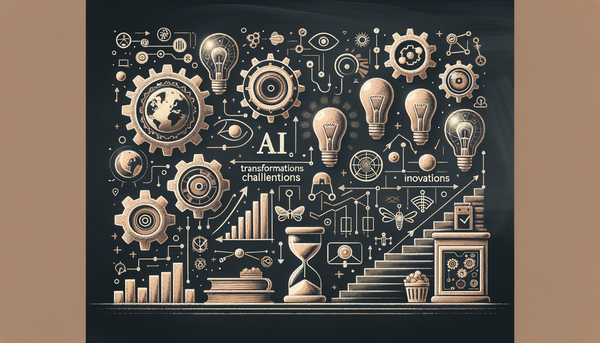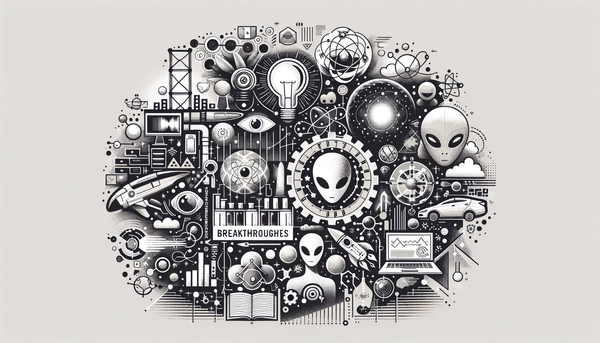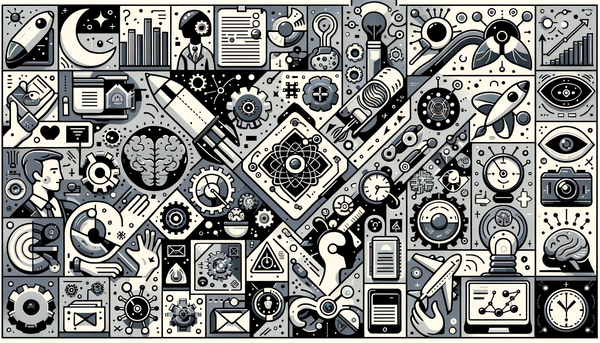AI News: Transformations and Challenges in the Pharmaceutical Industry

This comprehensive review explores the evolving landscape of Artificial Intelligence through the lens of multiple recent milestones: from AI data centers struggling with surging energy demands and the innovative quest for sustainable power, to studies warning of an overreliance on AI that may stunt our critical thinking, and ambitious ventures in the pharmaceutical sector aimed at revolutionizing drug discovery amid integration hurdles. We also delve into insights shared at an international AI summit, examine the emergence of net-zero AI factories, and consider the role of AI in fostering safer educational environments. Each segment highlights the challenges, achievements, and ethical dimensions that define the current and future state of AI, along with the delicate balance between technological advancement and human capability.
AI Infrastructure: Navigating Energy Demands and Future Challenges
It is no secret that modern AI applications depend heavily on massive data centers, the engines powering countless industries from finance to healthcare. A recent Bloomberg video report, “Watch AI Data Centers in Need of 'Power Plugs'”, illustrates the urgent need for enhanced computing infrastructure, as data centers are rapidly reaching their current capacities. The analogy of these centers needing a “power plug” reflects a critical infrastructural bottleneck: as the demand for computational prowess surges, traditional energy sources and conventional hardware are struggling to keep up.
Within these sprawling computing hubs, energy consumption has skyrocketed, prompting companies to explore both alternative energy sources and more efficient hardware configurations. Many experts assert that modernizing data centers is not just a matter of performance but also one of sustainability. As AI demands more processing power, the environmental footprint of these centers becomes harder to ignore. This is creating a dual challenge—enhancing performance while ensuring that energy consumption remains within ecological bounds.
One interesting perspective considers the evolving relationship between technology and energy. With AI's exponential growth, traditional metrics of energy efficiency simply do not apply. Instead, engineers and researchers are pushing for innovative cooling techniques, renewable power integrations, and even the use of edge computing to decentralize data loads. Bloomberg’s detailed video analysis showcases some of these efforts, providing not only a visual examination of the challenges but also spotlighting forward-thinking solutions that could redefine the energy dynamics in the computing world.
The conversation is not one-sided; many industry leaders argue that the current strain inspires transformative inventions. Just as the industrial revolution paved the way for modern energy solutions, today's challenges drive innovation in designing data centers that integrate seamlessly with renewable energy systems. This integration, however, calls for enhanced government support, industry collaboration, and a reinvention of outdated practices—a multifaceted approach that resonates well with the cross-industry ethos fostering further development in data center sustainability.
With the evolving demands of modern AI, it becomes imperative for stakeholders to invest in research that not only enhances power efficiency but also anticipates future technological developments. The struggle to maintain pace with surging demands acts as both a cautionary tale and a catalyst for the next generation of energy solutions. Undoubtedly, the future of AI infrastructure hinges on striking a harmonious balance between performance and sustainable energy practices.
When Automation Outpaces Thought: Critical Thinking in the Age of AI
In an era drowning in convenience from modern technology, a recent study conducted by Microsoft casts a spotlight on an often-overlooked downside: the potential degradation of our critical thinking skills when we over-rely on Artificial Intelligence. This provocative study, as reported by Gizmodo, argues that an unbridled trust in AI could lead to what some might consider “lazy thinking,” where the human mind is coddled into passivity by the ease of algorithmic solutions.
The phenomenon is reminiscent of the reliance on autopilot features in aviation—a tool designed to assist pilots but not to replace the need for vigilance or critical input. Similarly, when AI becomes the primary source of answers, the risk is that we may gradually relinquish our natural muscle of thoughtful deliberation for expedience. Over time, this can create an environment where intuitive analytical processes are underused, potentially leading to skills atrophy.
In reflecting on this study, I cannot help but recall the words of the influential tech visionary Ginni Rometty:
“Some people call this artificial intelligence, but the reality is this technology will enhance us. So instead of artificial intelligence, I think we’ll augment our intelligence.”
This suggests that while technology can offer unprecedented convenience, it should be seen primarily as a tool to elevate human capabilities rather than a substitute for proactive thought.
Research in cognitive science supports the idea that human brains thrive on challenges. When we’re presented with problems that require deep thought, neural pathways are strengthened, enhancing both memory and problem-solving skills. In light of this, the study emphasizes the importance of self-challenging techniques—be it through traditional puzzles, analytical games, or mindful reflection—to ensure that our cognitive competencies are not overshadowed by the uncritical acceptance of AI-generated outputs.
The implications of neglecting critical thinking are profound. Not only could over-reliance on AI affect decision-making in professional realms such as healthcare, finance, and education, but it might also stunt the next generation’s capacity for innovation. Educators and technology developers are thus invited to collaborate on designing learning environments that integrate AI while still encouraging robust intellectual engagement. By striking a balance, we can harness the power of AI without diminishing the intellectual rigor that defines human progress.
Breaking Ground in Pharma: AI’s Role in Accelerating Drug Discovery
The pharmaceutical industry, always on the cutting edge of scientific innovation, has recently embraced the potential of AI to speed up the drug discovery process. According to a report from The Wall Street Journal, pharma companies are turning to AI in a bid to revolutionize drug development. This embrace, however, is not without its hurdles.
Integrating AI into the drug discovery process has sparked both excitement and trepidation within the industry. On one hand, AI-driven tools offer the prospect of sifting through massive datasets at lightning speed, identifying potential compounds and predicting outcomes with a degree of accuracy that manual processes could scarcely achieve. This approach promises to drastically reduce timelines for clinical trials and bring life-saving medications to market much sooner.
On the other hand, companies have encountered significant challenges. The primary issues revolve around the availability of high-quality data and the interpretation of complex AI results in a trustworthy manner. Despite the advancements, there exists a gap between raw computational power and the nuanced understanding required for successful drug development. For many, the hurdles are not purely technological, but stem from organizational inertia, regulatory uncertainties, and the intrinsic difficulties in translating computational predictions into real-world therapeutic outcomes.
Nonetheless, the potential for AI to transform the pharmaceutical landscape remains undeniable. Collaboration between tech companies and medical research teams is on the rise, encouraging a cross-disciplinary exchange of insights. As these partnerships mature, we are likely to see a new era where AI not only accelerates drug discovery but also helps in personalizing medicine, making treatments more effective and tailored to individual patient needs.
It is noteworthy that these innovations are not just occurring in isolation. The pharmaceutical sector’s pivot to AI is echoed in other industries as well, where the integration of advanced algorithms is becoming a hallmark of progress. The story in pharma underscores a larger narrative at play: as AI continues to mature, industries must be prepared to navigate a landscape of both exponential opportunity and equally exponential challenges.
Insights from the Global Stage: Ethical and Collaborative Imperatives
The global dialogue on Artificial Intelligence reached a crescendo at the recent A.I. Summit in Paris, a forum that provided a rare blend of technological insights and ethical discourse. Among the many expert discussions, five prominent themes emerged: the unparalleled impact of data, escalating ethical concerns, the necessity for collaboration between AI researchers and industry practitioners, the transformative potential of AI in healthcare, and the critical role of governmental regulation.
Each of these themes highlights a facet of the contemporary AI debate. Data, the cornerstone of all AI applications, is both a powerful asset and a source of potential vulnerability. As data drives the algorithms that underpin AI, the conversation increasingly turns to issues of privacy, security, and the fair use of personal information. Meanwhile, ethical considerations have taken center stage as the potential for bias, discrimination, and unintended societal consequences becomes more apparent.
What stood out to me at the summit was the emphasis on collaboration. Stakeholders across the spectrum—from computer scientists and engineers to policymakers and business leaders—agreed that the future of AI relies on synergy. An interdisciplinary approach is not a luxury but a necessity to address the multifaceted challenges that accompany rapid technological progress. Reflecting on these discussions, I recall a resonant quote from Fei-Fei Li:
“I believe in the future of AI changing the world. The question is, who is changing AI? It is really important to bring diverse groups of students and future leaders into the development of AI.”
This sentiment underpins the push for inclusivity and balanced progress in the AI sphere.
The summit also shed light on the potential of AI in revolutionizing healthcare—one of the most exciting developments in the field. From streamlined diagnostics to personalized treatment plans, AI’s impact on medicine is profound. Nonetheless, these advancements are accompanied by ethical concerns, namely around patient data security and the transparency of AI decision-making. As such, governmental bodies are now tasked with formulating guidelines that ensure technological advancements are implemented responsibly.
By integrating open dialogue with structured regulatory oversight, the summit’s takeaways paint a picture of an industry at a crossroads—where innovation must be tempered with caution and ethical considerations. The discussions serve as a reminder that the path to a progressive AI future is paved not only with technical breakthroughs but also with thoughtful, principled debate.
Green Innovations: Pioneering Net-Zero AI Factories for a Sustainable Future
Amid the increasing narrative concerning energy consumption in tech, a groundbreaking initiative is shaping up: DataVolt's collaboration with NEOM to establish the region’s first net-zero AI factory. As reported by NEOM’s official newsroom, this ambitious project aims to marry innovation in AI technology with the urgent need for environmental sustainability. By harnessing cutting-edge renewable energy sources and state-of-the-art design principles, the project is set to redefine what it means to incorporate sustainability in heavy computational environments.
In many ways, this project is the antithesis of the challenges highlighted by the energy demands of aggressive AI data centers. While traditional setups grapple with high energy consumption and the associated environmental footprint, the net-zero factory initiative offers a promising blueprint for the future. It is a radical rethinking of industrial architecture, wherein efficiency and environmental stewardship are not mutually exclusive but rather complementary.
The sustainable design of such factories involves integrating solar, wind, and possibly even geothermal energy, ensuring that the entire operation maintains a negligible carbon footprint. Such an approach also encourages the tech industry to reassess how it allocates resources and designs its infrastructure. In essence, green innovations like this project signal a shift towards a future where progress is measured not only in computational speed but also in environmental responsibility.
Moreover, the convergence of AI and sustainable energy practices presents an intriguing opportunity to leverage technology for environmental advocacy. Imagine data centers that automatically optimize their energy consumption based on supply and demand, or AI algorithms that constantly tweak operational parameters to maximize efficiency. These prospects reinforce the idea that technological innovation can—and should—serve a broader societal good by aligning with global sustainability goals.
This initiative also serves as an important reminder for those involved in planning and development within the tech sector: environmental impact is an integral part of future-proofing AI operations. By investing in sustainable models today, the industry is not only preparing to meet the demands of tomorrow but also ensuring that progress does not come at the expense of the planet.
Fostering Safe Learning Environments: AI in Education
In an era when digital communication reigns, the role of Artificial Intelligence in maintaining safe and secure environments for learning is more critical than ever. Denver Public Schools, as highlighted in a CBS News report, have adopted AI-driven systems to monitor student messages, aiming to quickly detect any potential threats or concerns. This application of AI in education is a promising step toward enhancing safety without imposing excessive restrictions on student freedom of expression.
The use of AI to flag potential risks in real time showcases how technology can serve as an early warning system. By scanning communication channels, the system can identify suspicious content, violent language, or even subtle signs of distress. Such technological interventions can prompt timely responses from authorities or counselors, potentially preventing issues before they escalate into more dangerous situations.
While the benefits are clear, the implementation of such surveillance systems also raises important questions about privacy and the balance between security and individual rights. Educators, parents, and policymakers alike must navigate these complexities carefully, ensuring that while student safety is prioritized, personal privacy and data protection remain uncompromised. The challenge, then, lies in crafting systems that are transparent in their operation, subject to rigorous ethical standards, and continuously refined through community feedback.
As educational institutions continue to incorporate advanced technologies, the role of AI in improving student welfare and supporting educators will undoubtedly expand. The Denver Public Schools initiative exemplifies a future where technology fosters proactive solutions in real time, paving the way for a safer, more responsive educational environment. By leveraging AI’s capabilities, schools may indeed become a vanguard of secure digital communication in our increasingly interconnected world.
Future Considerations: Technological Integration and Societal Impact
These diverse advances in Artificial Intelligence—from rethinking the energy strategies of data centers to fostering safer learning environments—illustrate the dynamic interplay between innovation and the challenges of modern technology. The convergence of sustainability, human cognitive development, ethical oversight, and sector-specific applications presents a multi-layered tapestry of opportunities that demand balanced, thoughtful integration.
It is crucial to acknowledge that as technology evolves, so too must our methods of governance and adaptation. Investments in AI infrastructure and its applications come with the responsibility of ensuring that these advancements ultimately serve society without compromising ethical principles or environmental sustainability. For instance, while a net-zero AI factory sets a high bar for operational efficiency and eco-friendliness, it also invites other industries to reconsider their approaches to resource consumption.
In parallel, studies warning about the erosion of critical thinking remind us that reliance on technology should not render human intellect passive. The synergy between human insight and machine efficiency is what has historically driven major innovations—from the printing press to the internet—and will continue to be the catalyst for future breakthroughs. By focusing on augmentation rather than replacement, we safeguard the core of our intellectual and creative capacities.
Historical shifts in technology have often been met with both enthusiasm and apprehension; today, the narrative around AI is no different. The challenges we face—from infrastructural bottlenecks and ethical ambiguities to industry-specific hurdles—are opportunities to build a framework where progress and responsibility go hand in hand. This balanced approach, rooted in collaboration, transparency, and continuous learning, is essential as AI technologies scale new heights.
Ultimately, the future of AI is not predetermined—it is shaped by the decisions we take today. Whether by reimagining data center designs, cautiously integrating AI into daily decision-making, retooling our approaches in the pharmaceutical arena, or safeguarding the integrity of educational environments, every step forward should be measured against the potential impact on society as a whole. Such a holistic perspective is not just beneficial but imperative as we journey forward into an era where technology amplifies both our strengths and our vulnerabilities.
Further Readings
For readers interested in exploring more on the dynamic developments in AI, the following resources from AI.Biz provide additional insights and on-the-ground updates:
- AI News Podcast - Breakthroughs and Investments
- AI News Podcast - Episode Highlights
- AI News Podcast - Updates on Summits, Innovations, and Challenges
- AI News Podcast - Advancements and Ethical Challenges in AI
Additionally, interested readers can explore the original sources such as Bloomberg’s coverage on AI data centers, The Wall Street Journal on pharmaceutical advancements, and CBS News on educational safety initiatives for a deeper dive into each topic.




